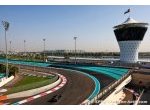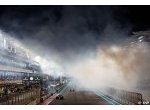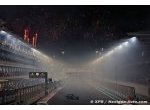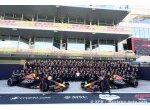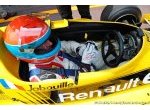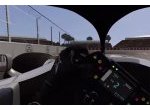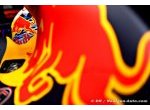Q&A with Paddy Lowe
Reliability let us down on a number of occasions in 2014
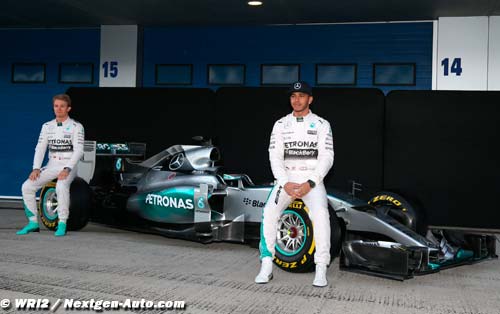
What has been the focal point of our learning from 2014?
PL: It’s no secret that reliability let us down on a number of occasions in 2014. Thankfully, over the course of the season overall, this did not fall in an asymmetric way between the drivers – or in a costly manner to our Constructors’ Championship ambitions. But we know we need to up our game. No matter how good things might seem, there is never a scenario where you can afford to leave points on the table. Making a car reliable is a long game and a lot of effort has gone in on that side. It’s not about fixing individual issues but about raising quality across the many thousands of parts and processes involved.
Speaking of reliability, more will now be required from gearboxes in terms of durability. How tough a task is this to achieve?
PL: During the first year of the new Hybrid formula, there were two notable aspects to the rules governing the gearbox. First, there was a ‘joker’ available which permitted teams to change their ratio specification once during the year, which is now lost. This means teams have to pick their ratios for the entire season before Melbourne. Many teams took advantage of the ‘joker’ in 2014 to make performance gains rather than provide an insurance policy – running shorter gears up until Monza before changing to a longer ratio set for the remainder of the season. This won’t present an issue, however, as teams are now familiar enough with the Power Units to set ratios for the season with reasonable confidence.
The more significant change, however, is that previously teams had five opportunities per driver, per season, to change the physical components of the ratios. In effect, this meant that ratio components could be changed halfway through the six race cycle life of each gearbox. This option is now gone, which represents a far more significant change. Teams must now design ratios which will genuinely last six race distances, which has been a key obstacle to overcome through the winter.
The most obvious change, visually at least, comes in the form of the nose. What is the theory behind this change and what else will we see different on the F1 W06 Hybrid?
PL: While it has been widely quoted that regulations governing the noses of the cars have been changed with aesthetics in mind, this is actually misleading. The primary reason for the alteration has been to achieve the original height targeted by rules introduced for 2014. This was, to a greater or lesser extent, bypassed by every team last season, as the regulations were not quite tight enough. The objective behind the regulation itself is one of safety – ensuring compatibility with the range of different impacts that Formula One cars can experience. An example would be contact between the nose and a rear tyre, as we saw when Mark Webber launched into the air at Valencia a few years ago. The required nose height has been achieved by putting in place a number of additional constraints concerning the front nose sections.
A by-product has been the disappearance of some rather unfortunate looking designs as seen in 2014. Our nose was one of the shortest on the grid in 2014 and, in my opinion at least, one of the most attractive. It remains as such for 2015, albeit a little lower to comply with the new regulation. The core concept is to keep the nose as short as possible, with the mainplane of the wing as far forward of it as possible. This has produced a ‘clinging on by your fingernails’ kind of appearance where the wing attaches to the pillars, which is a big challenge to deliver structurally. Front wing stiffness tests today really do push the limits of engineering – particularly when coupled with the requirements of the front impact test.
The other more obvious visual differences concern the rear wing – which will move to a central, single pylon configuration for structural and aerodynamic reasons – and the external front suspension, which is an even more extreme version of the innovative concept we introduced last year.
And under the covers?
PL: One of the big challenges of 2014 with the new Power Units was cooling – particularly the charge air cooling, which was a significant new element. Now in its second year of evolution, we have been able to go through the analysis loop to find performance through a better optimised solution – the objective being to find the best net performance at the full range of temperatures experienced through a season.
Another technical talking point of last year was the ban on FRIC, which came around quite quickly and unexpectedly. The suspension concept in the W05 was built around the presence of the FRIC system. The W06 suspension system has been designed without FRIC from the outset, which has presented opportunities to re-optimise in this area.
For all teams – and more notably drivers – weight was a key consideration in 2014. How will this alter for 2015?
PL: When the rules were put together for the new generation of Power Units, it was quite tricky to estimate what weight would be required to incorporate the new systems into a car. The number that was picked was quite aggressive – something which became apparent as the season drew closer. Some teams were content with the previous limit, while others were finding it very challenging. A 10kg increase was agreed only by majority vote, which is why there has been a notice period for the rule to be introduced for 2015. In addition the 2015 tyres are around a kilo heavier than last year due to improvements to the rear construction, so the final weight limit is 702kg – an increase overall of 11kg.
As always, it’s a matter of choosing how best to use the extra weight for the most performance – not necessarily a chance for the drivers to start eating cakes! Saving weight has always been central to the sport – creating efficient structures that are lighter but also stronger and more aerodynamically beneficial. We have put a lot of work into finding those few percentage points on every single component.
On the topic of safety, further changes have now been introduced to provide improved driver protection – talk us through these?
PL: Firstly, the Zylon anti-intrusion panels on both sides of the survival cell have been extended upwards to the rim of the cockpit and alongside the driver’s head. This was an area which was identified as having the potential to be stronger than it has been in the past and these changes will address that. In certain incidents, it will certainly be beneficial to the safety of the driver.
Furthermore, in an additional bid to improve safety, a Virtual Safety Car (VSC) system has been implemented to ensure drivers slow sufficiently under certain conditions. This was successfully trialled during practice sessions towards the end of last season and has now been introduced fully for 2015. It can be used to neutralise a race without having to introduce the safety car itself by enforcing a speed profile to which the drivers must adhere. This addresses one of the pitfalls of waved yellow flags. While drivers are expected to slow significantly in such circumstances – and the stewards will look for throttle lifts accordingly – what constitutes a ‘lift’ can be subjective. These can be very minor and yield little speed reduction. Of course, racers being racers, they will always be inclined to push the boundaries. So, the VSC is a mechanism to manage those mid-range incidents where it will be much safer to force the drivers to stay well within the limits of the vehicle.
